Commonly called the Desert Rose, this is one of several Caudiciform plants, which form a caudex, a fat, swollen stem, trunk, or aboveground roots. Plants in this category sport colorful names like elephant’s foot, turtle plant, based on the stem formation. The common red Desert Rose can be found at many garden centers.
I have been trying to grow hybrid Adenium from seeds. I have had small success. When they flower, I will post new pics.
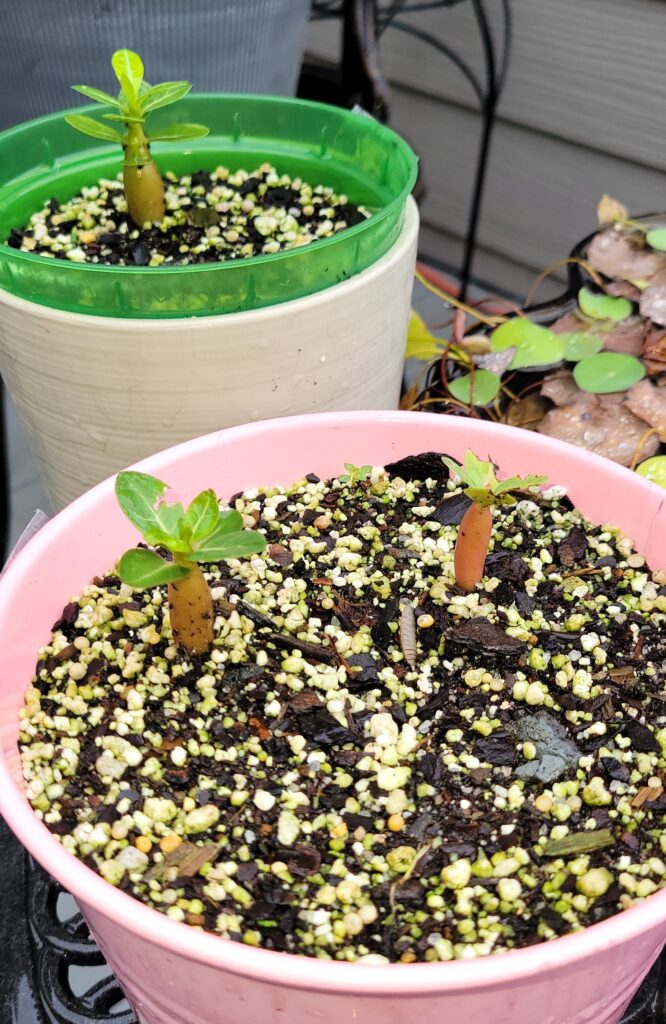
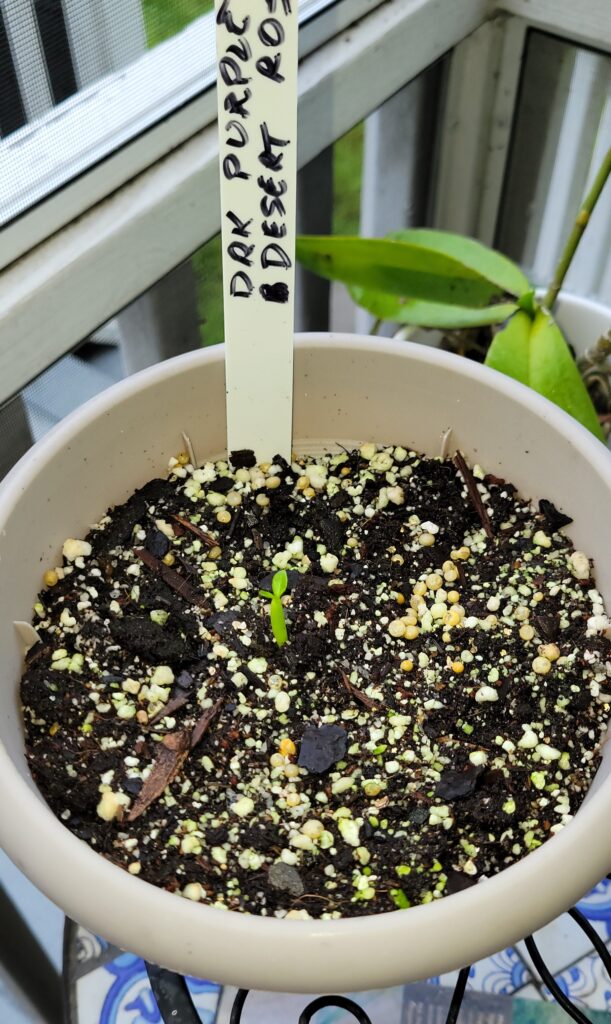
Adenium Obesum (see below for spring breakout)
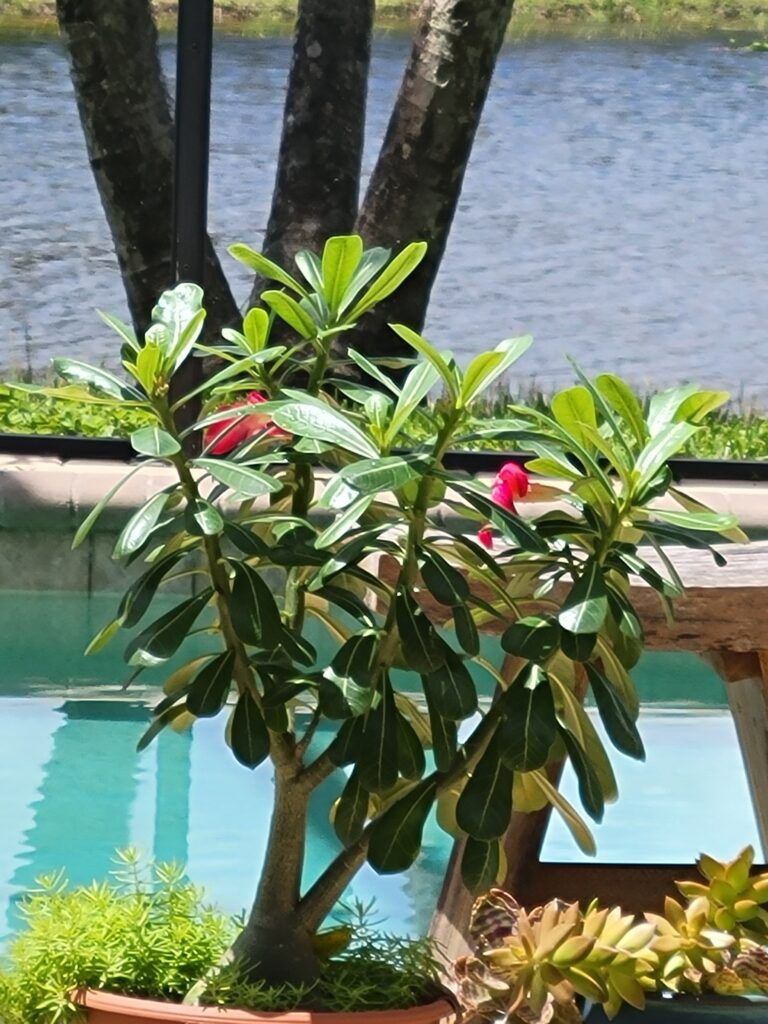
One of my Desert Roses – note the fat stem
We have several adenium plants, Arabicum, Socotranum, and Obesum, all grown from cuttings or tiny rooted stems. I have, so far, had no success growing them from seeds.
For Winter, I “hard pruned” the Desert Roses, that is, cut off all the branches to about 2 or 3 inches. I dusted the cut ends with Cinnamon, a mild, plant friendly antibiotic.

Now they are slowly waking up, sprouting little red buds that will (I hope) become branches.

The Desert Roses I pruned have awakened. (6/7/2022)

Uncarina Grandidieri
This plant, native to Madagascar, is commonly called the Mousetrap plant, because of the shape of its fruit. Deciduous, it loses leaves in the winter, but here in Florida, who knows? Its leaves are looking tired, but it was not due to the season.
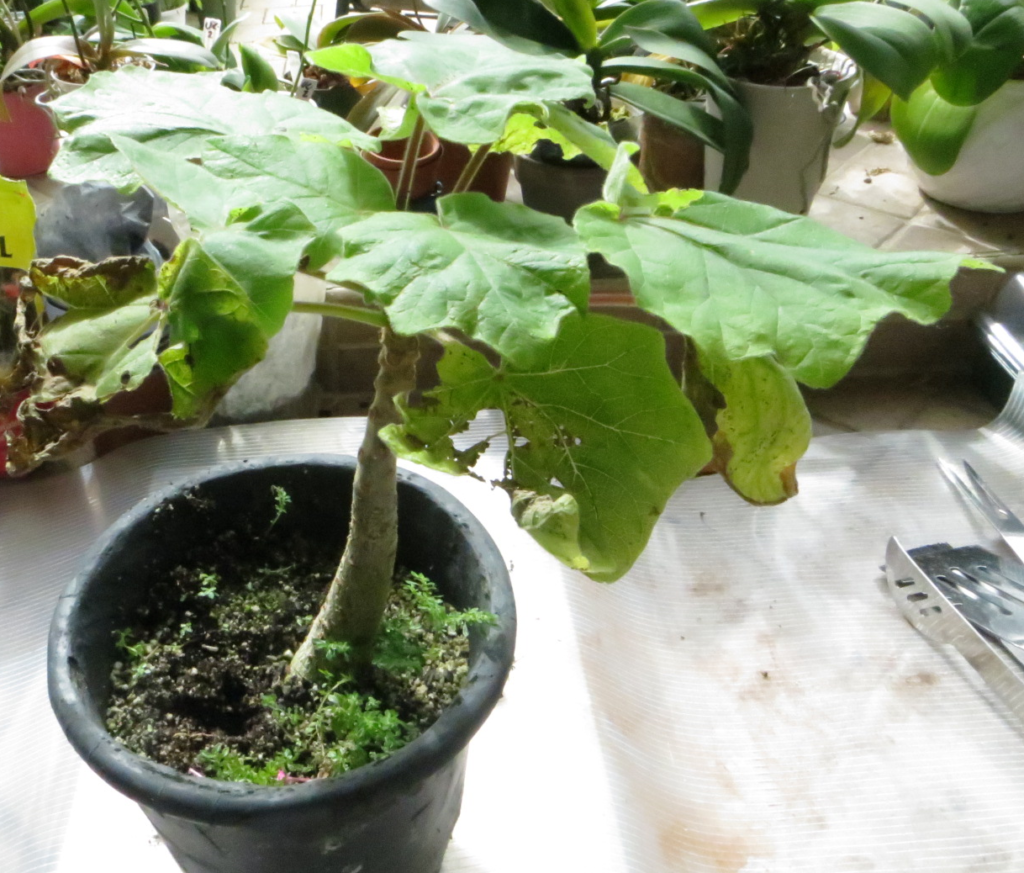
Looking at the plant, I noticed that is was so pot bound, that the root mass had cracked the pot.
…. and here is the root structure I found when I took it out of its broken pot
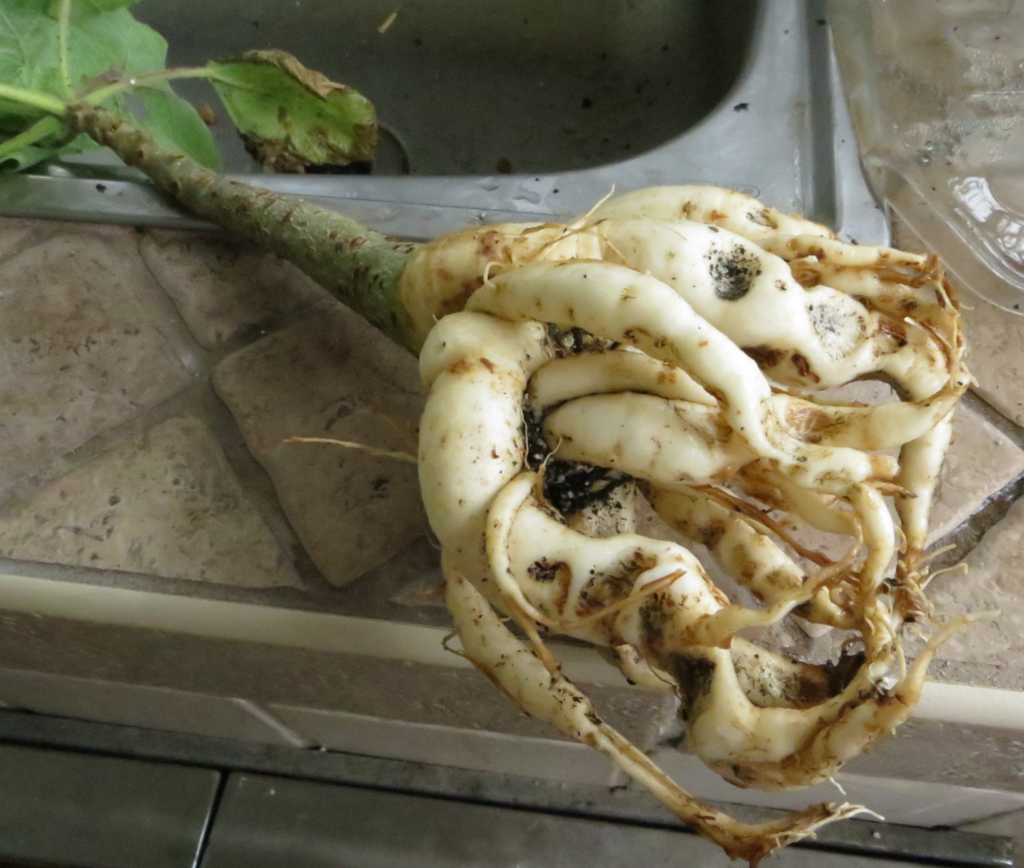
Repotted in a larger pot, top dressed with River Pebbles. I think that when it starts to perk up in the Spring, I will “top” it, pruning off everything above the first few leaf scales. The goal is to force it to branch before it gets too tall. I’ll post new pics.
